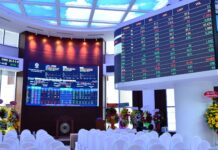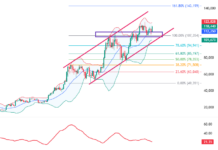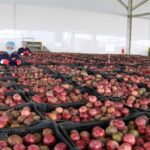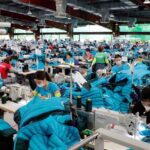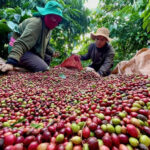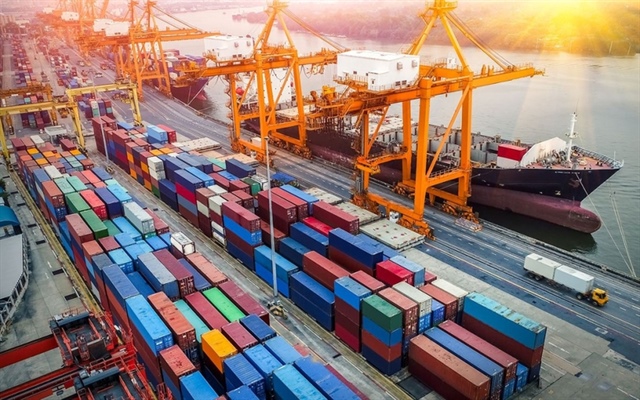
Vietnam’s merchandise exports shone brightly in the first seven months of 2025, with an estimated turnover of $261.8 billion, up 14.6% from the same period in 2024 and surpassing the full-year target. – Illustrative image |
In an interview, Mr. Nguyen Anh Son, Director of the Import-Export Department (Ministry of Industry and Trade), affirmed that the export growth momentum came from multiple factors, among which several main pillars could be identified.
First, the government has been strongly engaged with comprehensive solutions to support the economy, notably in terms of capital. Recognizing the difficulties arising from the external context, the government has directed specific tasks to remove obstacles for export activities, including: proactively negotiating with partners on tariff issues, supporting businesses in information and market warning, continuing to review and remove difficulties in production and business projects of enterprises, and vigorously reforming and simplifying procedures and licenses, with a focus on import and export.
Additionally, trade promotion activities have been renewed for greater effectiveness, utilizing information technology to connect supply and demand for new and potential markets. Dissemination activities regarding free trade agreements have been promoted to help businesses better understand and take advantage of these agreements.
Furthermore, the postponement of retaliatory tariffs against the United States and the negotiation of a bilateral trade agreement on retaliation with the US prompted businesses to proactively push export orders to the US in the first months. Exports to the US in the first seven months reached over $85.1 billion, up 27.8%.
Increasing pressure of trade remedies
However, the Director of the Import-Export Department assessed that along with the breakthrough, the pressure of trade remedies is also increasing. As of the end of July 2025, Vietnamese exports had faced 292 cases of investigation and application of trade remedy measures by foreign partners. Among these, anti-dumping cases accounted for the majority with 160 cases, followed by 33 cases of countervailing, 59 cases of safeguard, and 40 cases of anti-circumvention. In the first seven months alone, 15 new cases were initiated, including 10 anti-dumping cases, 2 countervailing cases, 1 anti-circumvention case, and 2 safeguard cases. The list of products under investigation is expanding, ranging from key export items such as solar energy panels, wood, steel, aluminum, textiles, seafood, and tires to medium and small-scale products such as paper bags, honey, and paper plates.
To cope with this situation, Mr. Nguyen Anh Son said that the Ministry of Industry and Trade has implemented a series of measures to protect businesses. The Ministry regularly monitors, cooperates, and shares information, disseminates potential risks, and expresses determination to combat origin fraud, illegal transhipment, and trade remedy evasion. Early warning activities have been strengthened, and the list of products at high risk of investigation is updated at the end of each quarter and sent to ministries, sectors, localities, associations, and enterprises for timely monitoring. At the same time, the Ministry also provides consulting and guidance to businesses on how to prepare transparent dossiers to avoid investigations or respond effectively if investigated.
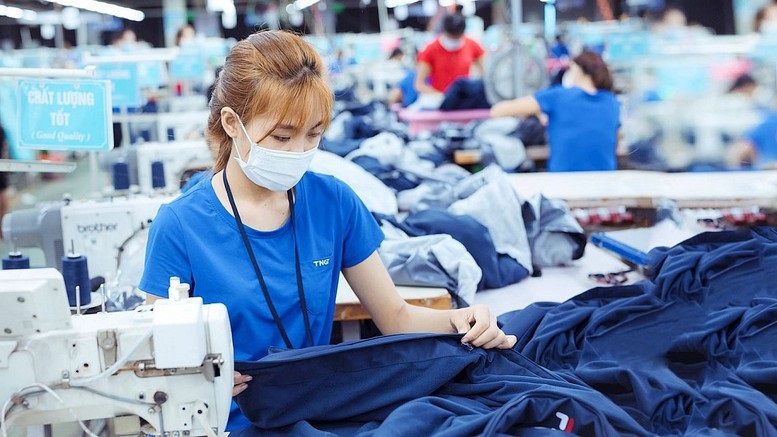 Textiles and garments are one of Vietnam’s key export sectors – Illustrative image
|
Need for proactiveness from businesses
Looking ahead to the remaining months of 2025 and beyond, Mr. Nguyen Anh Son emphasized the need to build a strategic direction for sustainable export growth. Accordingly, the business community needs to be more proactive and flexible, closely following information and recommendations from the government and ministries, and promptly adjusting production and business activities to comply with the regulations of import markets. Compliance with quality, environmental standards, and product origin should be considered a prerequisite. Businesses also need to invest in research and technology application and improve governance capabilities to enhance the competitiveness of their products.
Mr. Son also outlined development orientations for specific industry groups. For the high-tech manufacturing industry, such as electronics and machinery equipment, the goal is to continue increasing localization rates and added value while attracting more investment in the production and export of semiconductors and environmental goods.
For textiles, garments, and footwear—sectors with high competitiveness—there is an urgent need to innovate technology and transition to green production, meeting sustainability standards. For agricultural and aquatic products, deeper processing, brand building, and improved compliance with quality and food safety regulations are essential. For wood and wood products, the focus is on deep processing, product diversification, quality enhancement, and brand establishment, leveraging Vietnam’s advantages in raw material sources and processing capabilities.
In addition to domestic solutions, taking advantage of opportunities from free trade agreements plays a pivotal role. According to Mr. Nguyen Anh Son, Vietnam has affirmed the correctness of the policy of integration and diversification of export markets through the signing and upgrading of new-generation FTAs. These agreements open doors for Vietnamese goods to enter large markets and attract more investment, creating new resources for exports. Annual statistics show a continuous increase in the number of certificates of origin, reflecting businesses’ improved utilization of international commitments.
To further capitalize on these agreements, businesses need to thoroughly understand the regulations and keep abreast of protective measures and trade barriers from partners to take advantage of tariff preferences and minimize legal risks. It is also crucial to invest in technology innovation, digital transformation, and product quality improvement to meet international standards, reduce costs, and enhance competitiveness. Moreover, businesses should equip themselves with knowledge about trade remedies and closely cooperate with management agencies to effectively respond to anti-dumping, countervailing, or safeguard investigations initiated by foreign countries.
“The Ministry of Industry and Trade will continue to accompany businesses by providing market information, supporting capacity-building training, and implementing trade promotion programs. The Ministry will also promote institutional improvement to create more favorable conditions for businesses to take full advantage of international integration opportunities, thereby enhancing the position of Vietnamese goods in the global market,” affirmed Mr. Nguyen Anh Son.
Anh Tho
– 15:04 20/08/2025
“Accelerating Strategies: The Prime Minister’s Push for Economic Growth in 2025”
“Vietnam’s esteemed Prime Minister Pham Minh Chinh has issued a critical directive, Government Dispatch No. 133/CD-TTg, on August 12, 2025. This directive emphasizes the urgent need to accelerate specific tasks and solutions to achieve the nation’s economic growth targets for the year 2025.”
The Fashion Industry’s Positive Outlook: A 9% Surge in Export Revenue
The textile industry’s export turnover for the first seven months of the year surpassed 26.33 billion USD, reflecting a 9% increase. To attain the ambitious target of 47-48 billion USD for the entire year, the industry must strive to achieve monthly exports of over 4 billion USD in the remaining months.
Unlocking Opportunities: Propelling Vietnamese Businesses into the $5 Trillion Halal Market
The global Halal market is projected to reach a staggering $5 trillion by 2030, presenting a plethora of opportunities for Vietnamese products, especially those exported through the Malaysian gateway.

















